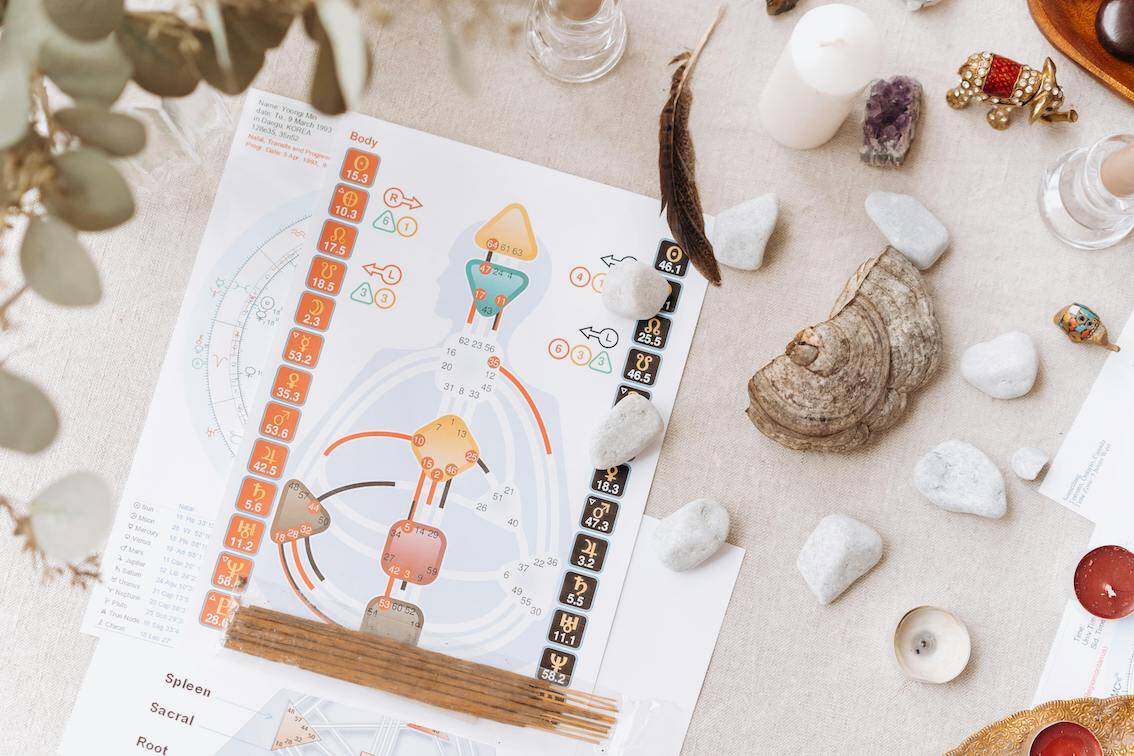
Table of Contents
Uncover the meanings and significance behind chakra symbols in this insightful article. Explore the visual language of energy centers, understanding how these symbols represent balance and alignment. Elevate your understanding of chakras and energy flow with a straightforward guide to chakra symbols.
Key Takeaways
-
The seven major chakras are each represented by unique symbols, reflecting their specific energies within the chakra system.
-
Each chakra symbol is associated with the element, color, and attributes that correspond to its position and function in the physical body.
-
Understanding the 7 chakra symbols can help enhance your awareness of kundalini energy and its flow through the spiritual chakras.
-
These symbols also embody cosmic consciousness and the interplay between masculine and feminine energy within us.
-
Incorporating chakra symbols into daily practices can support alignment and balance across all energy centers.
-
Exploring these symbols can deepen your connection to the spiritual chakras, enriching your journey toward holistic wellness.
Chakra Symbols Defined
Chakra symbols are fascinating tools that help us understand the energy centers within our bodies, each one connected to different aspects of our health and happiness.
These symbols, part of a tradition rich in history and meaning, act like keys to unlocking our potential for balance, healing, and personal growth.
As we explore the vibrant world of the seven main chakra symbols, we'll dive into what each symbol stands for, from the chakra colors and elements they're associated with to the unique ways they influence our everyday lives.
What are Chakras?
Chakras, a term deeply rooted in ancient Indian philosophy, refer to the seven key energy centers believed to reside within the human body.
This concept, central to the practices of yoga and meditation, derives from the Sanskrit word for "wheel" or "circle," aptly describing these focal points as swirling vortexes of energy that extend from the base of the spine to the crown of the head.
Each chakra is strategically situated along the spinal column, correlating with specific nerve bundles and vital organs. This alignment is not coincidental; it reflects the profound interconnection between our physical health and our emotional, psychological, and spiritual states.
The chakras are thought to govern the flow of life energy, known as "prana" in Sanskrit, throughout the body. They each serve as a hub for the energy that influences various aspects of our existence, from basic survival instincts to our capacity for love, communication, intuition, and spiritual connection.
What are The Seven Chakra Symbols
Chakra symbols serve as vibrant illustrations of the energy centers. Each chakra symbol incorporates additional shapes such as triangles, squares, and petals, each with its own significance and connection to the specific energy center it represents.
Beyond geometric forms, these symbols are imbued with distinct colors, each resonating at a unique frequency. These colors are not arbitrary; they are carefully chosen to reflect the specific vibrations and qualities of the energy they represent, offering a deeper understanding of each chakra's essence and influence on our lives.
Root Chakra Symbol Meaning
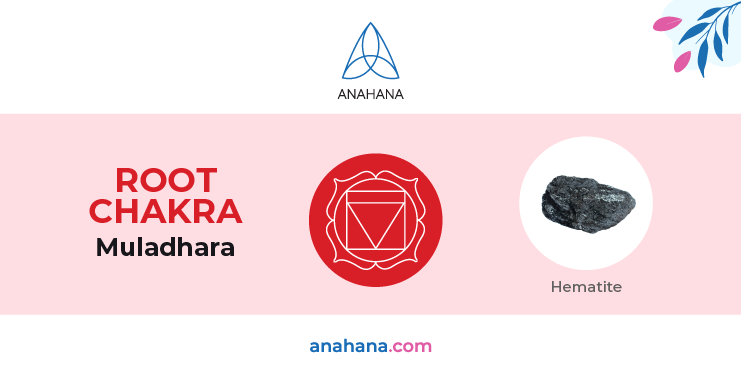
As the first chakra, the Root Chakra symbol meaning is complex and connects to the earth element. It appears as the alchemical symbol for earth, reinforcing the grounding energy and powers of the Muladhara chakra.
-
Four-petalled Lotus: The Root Chakra symbol of the lotus stands for the four areas of consciousness through the four petals: Manas (mind), Buddhi (intellect), Chitta (consciousness), and Ahamkara (ego).
-
The Square: The square represents foundational life energy, rigidity, and stability. The number four repeats again here as a four-corner symbol, representing foundational life energy.
-
The Inverted Triangle: The yantra within the lotus flower has a downward pointing arrow, also seen as an inverted triangle. Each of the three points has a meaning relating to consciousness, experience, and the three divinities. It represents the elemental symbol for earth, projecting grounding energy.
-
Red Chakra: The color red represents how the Root Chakra signifies power, signifying security, safety, and control. It also symbolizes the birth of human consciousness.
-
Hematite: This is a reddish-black mineral hematite nourishes an individual’s roots.
Sacral Chakra Symbol Meaning
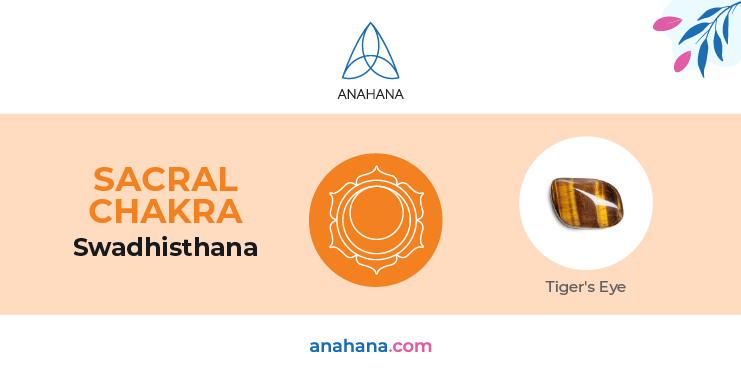
The Sacral Chakra, or the Svadhishthana chakra, is our central lower chakra. It relates to water, representing fluidity, movement, and aliveness.
-
Six-petal Lotus: The Sacral Chakra symbol of the lotus contains six petals. The lotus flower petals represent overcoming anger, jealousy, cruelty, hatred, pride, and other negative emotions and qualities. With this, one can embrace your divine qualities.
-
The Circles: The yantra is a circle representing the water element and the moon, symbolizing the cyclical nature of birth, death, and rebirth.
-
The Crescent Moon: The crescent moon symbolizes cycles, never-ending change, chaos, and constant movement.
-
Orange Chakra: As a warm and exciting color, it showcases the chakra’s impact on people’s sexuality, intimacy, and creativity.
-
Tiger’s Eye: The tiger's eye, with its orange color, helps align the Sacral Chakra and helps one gain control of their life.
Solar Plexus Chakra Symbol Meaning
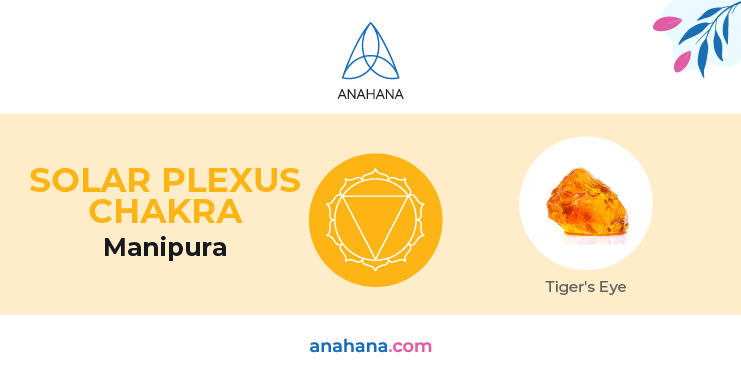
Manipura Chakra, the Solar Plexus Chakra symbol relates to the fire element and the sun. It represents one’s energy and personal power.
-
Ten-petalled Lotus: The ten petals of the Solar Plexus Chakra represent the pranas that exist within us: Prana, Apana, Udana, Vyana, Samana, Naga, Kurma, Devadatta, Krikala, and Dhananjay.
-
The Inverted Triangle: The inverted triangle represents pushing energy down through the energy centers to obstruct the movement of Kundalini.
-
Yellow Chakra: The color yellow represents the ability to tap into our inner sun or light, correlating with our overall self-worth and self-esteem.
-
Amber: Amber effectively reduces shame and self-doubt and harnessing one’s confidence.
Heart Chakra Symbol Meaning
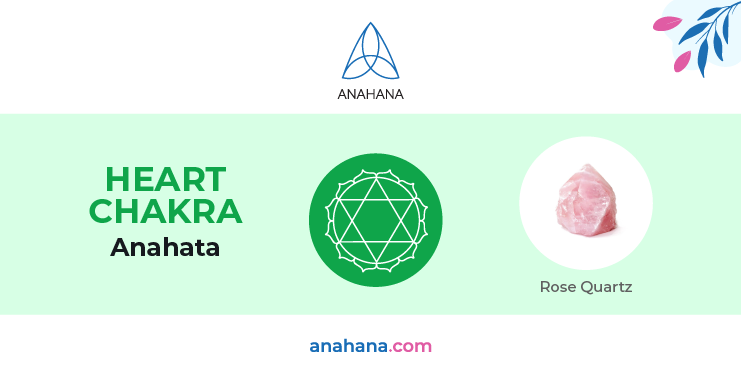
Anahata Chakra is the Sanskrit word for the Heart Chakra, meaning unhurt, unstruck, or unbeaten. It is associated with the air element and is essential in connecting the three base and higher chakras.
-
Twelve-petalled Lotus: The Heart Chakra symbol of twelve petals symbolize the twelve divine qualities of the heart: love, bliss, harmony, understanding, compassion, forgiveness, peace, clarity, empathy, purity, and forgiveness.
-
The Six-pointed Star: The six-pointed star represents masculine and feminine energies coming together to create the star shape, shown as two overlapping triangles - one facing up and one facing down. The intermingling of male and female energies creates the star shape.
-
The Hexagram: Two triangles build and represent the hexagram, illustrating how the Heart chakra is central in connecting the energy system.
-
Green Chakra: The color green represents one’s ability to give, receive, and heal, allowing us to let go of pain and regret.
-
Rose Quartz: This premier stone correlates deeply with the healing of the Heart chakra and is the only exception to crystal-color coordination.
Throat Chakra Symbol Meaning
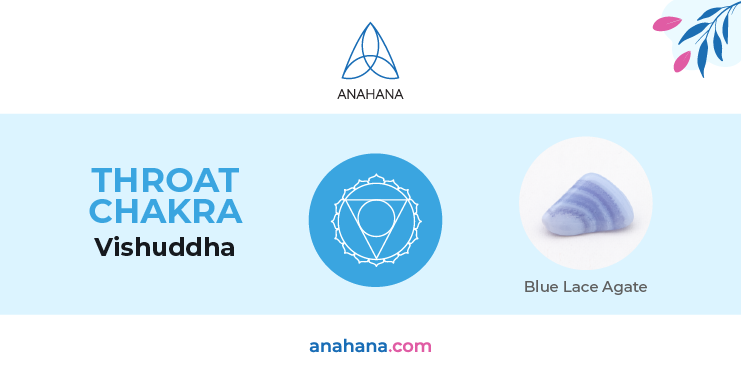
The Throat Chakra, or the vishuddha chakra, relates closely to our ability to express ourselves and communicate.
A blocked Throat chakra influences our ability to be authentic. It depicts the element ether, which is space that informs the essence of emptiness.
-
Sixteen-petalled Lotus: The Throat Chakra symbol of 16 petals relates to the sixteen vowels of Sanskrit. The vowels are light and easy, supporting the airy quality of speaking and communicating.
-
The Inverted Triangle: The inverted triangle symbolizes the energy of the lower three chakras concentrating and spinning upwards towards the higher chakras
-
The Circle: This chakra symbol incorporates the powerful white circle. The circle represents the full moon - this stage of the lunar cycle represents releasing, resting, and letting go. Through this, we can find knowledge and purity.
-
Blue Chakra: The color blue supports communication healing by symbolizing calmness, truth, trust, and intelligence.
-
Blue Lace Agate: This deep blue stone effectively circulates the energy center.
Third Eye Chakra Symbol Meaning
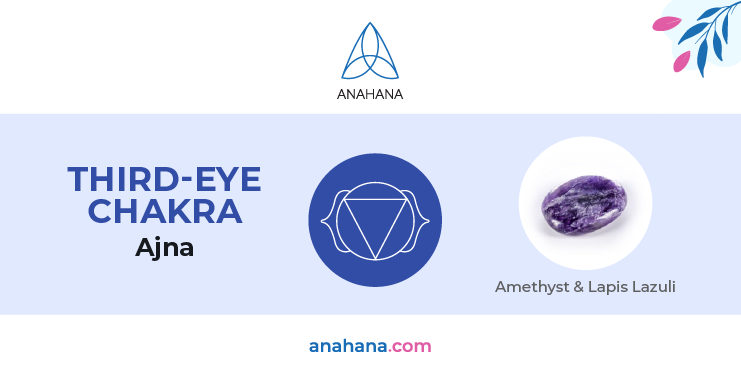
The Third Eye Chakra, or Ajna chakra, is the center of gravity and wisdom. It does not depict a particular element like the previous chakras. Some say it symbolizes light, while others say it refers to general everything-ness.
-
Two-petalled Lotus: The Third Eye Chakra symbol is a circle with only two petals representing the seed sounds. And spirituality between the self and god.
-
The Inverted Triangle: The inverted triangle of the Third Eye Chakra symbolizes an energy channel that depicts our consciousness and higher self. It represents the awakening of the pineal gland.
-
Indigo Chakra: The Third Eye Chakra is associated with dark blue and indigo. These shades are mystical, representing higher wisdom and supporting our connection to our intuition.
-
Amethyst and Lapis Lazuli: Amethyst is rich with purple tones, while lapis lazuli has a deep blue color, making them both ideal for the Third Eye Chakra.
Crown Chakra Symbol Meaning
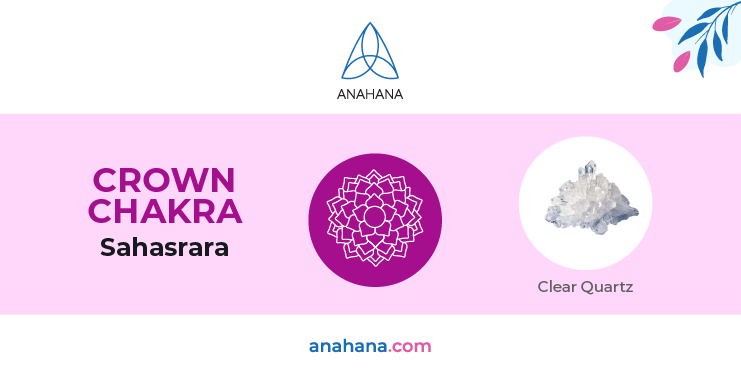
The Crown Chakra, or Sahasrara chakra, is the last of the seven chakras. Its natural element is about spiritual connection and transformation.
-
Thousand-petalled Lotus: The Crown Chakra symbol represents our connection to the divine and unity with the universe. The lotus flower symbolizes prosperity.
-
The Circle: The circle has a universal representation of infinite and cyclical nature - it is endless, just like the nature of energy. It is seen as a full moon and relates to our unity with ourselves and others.
-
Violet Chakra or White: The final chakra has two colors - shades of purple with glowing white. The bright colors radiate through the top of the head, reflecting spirituality and enlightenment.
-
Clear Quartz: Clear quartz can help open individuals to connect with a higher power.
Takeaway
Each chakra symbol is like a little treasure trove of wisdom, shining a light on different parts of our emotional, spiritual, and physical health.
By getting to know these symbols, we can tap into a deeper sense of harmony and balance in our lives.
Think of it as embarking on a journey with a map that leads to a more balanced, whole version of you.
So, why not explore these symbols? Let them be your companions as you navigate the path to finding your inner balance and getting to know yourself on a whole new level.
References
A Complete Guide to the Chakras and Their Effects on the Mind, Body and Spirit
Chakras: Energy Centers of Transformation
Disclaimer
The contents of this article are provided for informational purposes only and are not intended to substitute for professional medical advice, diagnosis, or treatment. It is always recommended to consult with a qualified healthcare provider before making any health-related changes or if you have any questions or concerns about your health. Anahana is not liable for any errors, omissions, or consequences that may occur from using the information provided.

By: Meriah McCauley
Meriah McCauley is passionate about the art and science of holistic health and healing. She explored the power of yoga through working with her mentor and guru Dr. Don Stapleton in Costa Rica. She also received a Masters in Psychology from Columbia University, specializing in Spirituality and the MindBody connection. Meriah now offers coaching, yoga teacher trainings, and Holotropic Breathwork for personal development. She loves to connect with those on this path.
